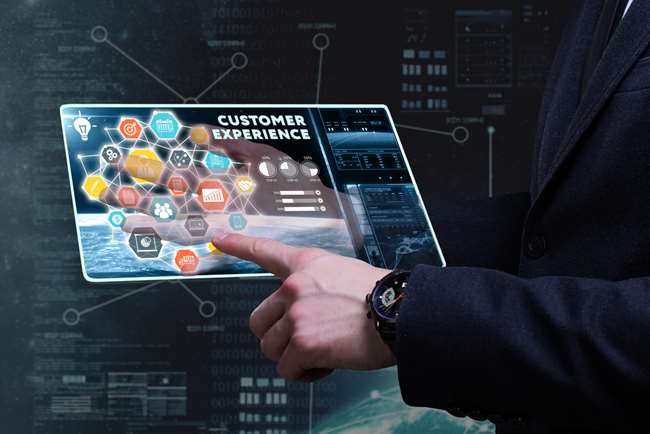‘Customer insight is central to the success of customer management strategies to maximize customer experience and value across the life cycle. This has become even more challenging in the digital world, where the window of opportunity to delight customers and maximize every customer interaction is reduced to seconds,’ says Forrester in ‘Winning in the Age of the Customer’
Users expect brands to deliver what they want in the instant they want it and will abandon sites, apps and service providers who don’t deliver. Google says the upper limit is 2-3 seconds, adding that you could lose 70 per cent of users if load times are too slow or too many steps are needed to complete an action. This is the environment in which CSPs must compete and win customers.
We explore the challenges below.
Falling Customer Loyalty
‘Churn prevention is one area that has become a concern of telecommunications executives the world over,’ according to a recent survey by McKinsey.
CSPs often invest far more in customer acquisition than retention, which almost guarantees downstream pain: if you treat the sale as the endpoint, all the trust and brand loyalty you built during the sales process could go out the window. Selling to existing customers is easier and more profitable than winning new ones, but in the fickle world of mobile consumers, cutting through to customers is tougher than ever.
“Micro” Attention Spans
‘Micro moments’ is a term coined by Google, to describe intent-driven moments of decision-making and preference-shaping that occur throughout the entire consumer journey.
Digitally-savvy consumers now expect CSPs to engage with them in real time, with a user experience as good as they get from their ‘over the top’ (OTT) applications. This is a major challenge for many CSPs whose infrastructure was never designed with such speed, responsiveness or agility in mind.
Need for “Digitally Native”, “Always On”
An average mobile user taps, swipes and clicks 2,617 times each day,’ a recent dscout study found; that’s about three interactions a minute for every waking hour of the day. With always-digitally-connected customers, CSPs can no longer rely on batch-driven outbound campaign management or reactive inbound marketing offers. To engage consumers who live and act in micro-moments of high intent, CSPS need to interact with them in real-time.
The new marketing paradigm is ‘digitally native, and always on’ and to capitalize, your organization needs to be primed to interact with customers in the moment, as and when they present themselves.
Competing With Giants
‘For CSPs, today’s digital world presents an opportunity to shift from disrupted to disrupter,’ says Tore Berg in his post ‘Goodbye telcos, hello IDSPs’9. ‘CSPs now have a continuously growing amount of data that holds a wealth of information.’
In other words, it’s only through better analysis and use of customer information that CSPs can compete with OTT digital giants who have muscled in on CSP businesses and eroded their margins. To do this, CSPs need to transition to being Digital Service Providers (DSPs), which means new partnerships, bundling new services with traditional telco services, integrating these into the BSS infrastructure and provisioning systems to automate delivery. Some telco operators may find the transition daunting, but it offers real benefits.
Barriers to Success
Can’t Capture Events in Real-Time
To find the value gaps, can your CVM system:
- Acquire detailed customer insights and update customer profiles as soon as changes are received?
- Offer just your best customers a personized loan?
- Tailor your offer to each customer’s history and real-time contextual information?
- Make the offer before their credit runs out?
Most operators find it hard to capture any events in real-time, let alone glean a full customer profile; their CVM stacks sit on top of data warehouses, typically causing a 24 to 48 hour delay in data analysis and extraction.
To capture events in real-time, you’ll need a marketing platform that lets you operate in the ‘digitally native, and always on’ world where your customers live. Your marketing teams need to be plugged into every customer interaction channel, and into real-time customer usage data. To succeed, your responses must be on the same level as Google and Facebook.
Can’t Identify Real Micro-Moments
Not every interaction is a micro-moment, and not every micro-moment is an opportunity for a personalized offer. So, the question your platform needs to ask is ‘is this a relevant event?’ and answer it in a heartbeat.
It’s more than ‘being there in the unique micro-moments that mobile users experience’; it’s knowing what kind of micro-moment it is.
Can’t Define the Best Contextual Offer Instantly
Once you’ve established that a micro-moment is relevant and presents an opportunity for interaction, you need to decide what to do next. You need to ask:
- What is the next best action at this moment?
- What is the best channel for interaction with this customer?
Taking into account each customer’s real-time contextual information, behaviour and recent offer history. To do this, you need sub-second, real-time business rules and real-time streaming analytics to identify and optimize the ‘offer allocation’, along with advanced analytics using machine learning.
Once the transaction context, customer history and preferences are known, you have enough profile data to make the right decision – which might be to make no offer at this time. The next decision is which channel to use for your interaction. There is quite a variety – like SMS, USSD, MMS, app notifications, email, landing page or social channel – and the choice may vary by region or device capability, customer type or observed channel behaviour.
How Do Smart CSPs/DSPs Address These Challenges
Respond to One in a Million
The smart CSPs/DSPs emulate the giants like Google: they use what they know about their customers to tailor millions of ‘one-in-a million’ offers in real-time, to capture and monetize those micro-moments, automatically.
They do it through platforms that go beyond contextual marketing, that link real-time context with profile and historical data (like usage patterns, recharge patterns, device type, hungry apps being used, tariff and additional demographics) to build a crystal-clear picture of each customer. They then tailor offers, services and interactions that drive real-time actions. This is real-time event decisioning.
Move From Big to Fast Data
Two years ago, The Harvard Business Review called the profession of data scientist ‘the sexiest job of the 21st century’ with demand far outstripping supply.
Fortune predicted that this demand would be short lived, because ‘Over time, software will do more and more of what data scientists do today.’
That’s exactly what happened, and why smart CSPs/DSPs are investing in cutting-edge software technology that offers ultra-high-speed, real-time, event-driven marketing. That is real-time event decisioning in action.
These advanced platforms can ingest and analyze vast amounts of data in milliseconds, including the data in your EDW, using superfast in-memory databases, massively parallel computing techniques and stream processing. The result is accurate, contextual analysis delivering up-to-date customer profiling in milliseconds.
Act on Moments of Truth Instantly
For contextual marketing platforms to turn business insights into instant action, they must do more: they must be able to ingest historical and current contextual data and provide blindingly fast analysis. This is what smart CSPs demand, so they can decide and act in the micro-moment.
The smartest deploy the most advanced platforms that can access their vast volumes of network level data, bypassing their legacy systems and going directly to their network source systems. These platforms can ingest real-time transactions (like APP and browsing data, home & roaming GSM & LTE subscription state changes, social mood and attitude shifts, and end of call or data session events) in milliseconds and initiate immediate, targeted customer interactions.






